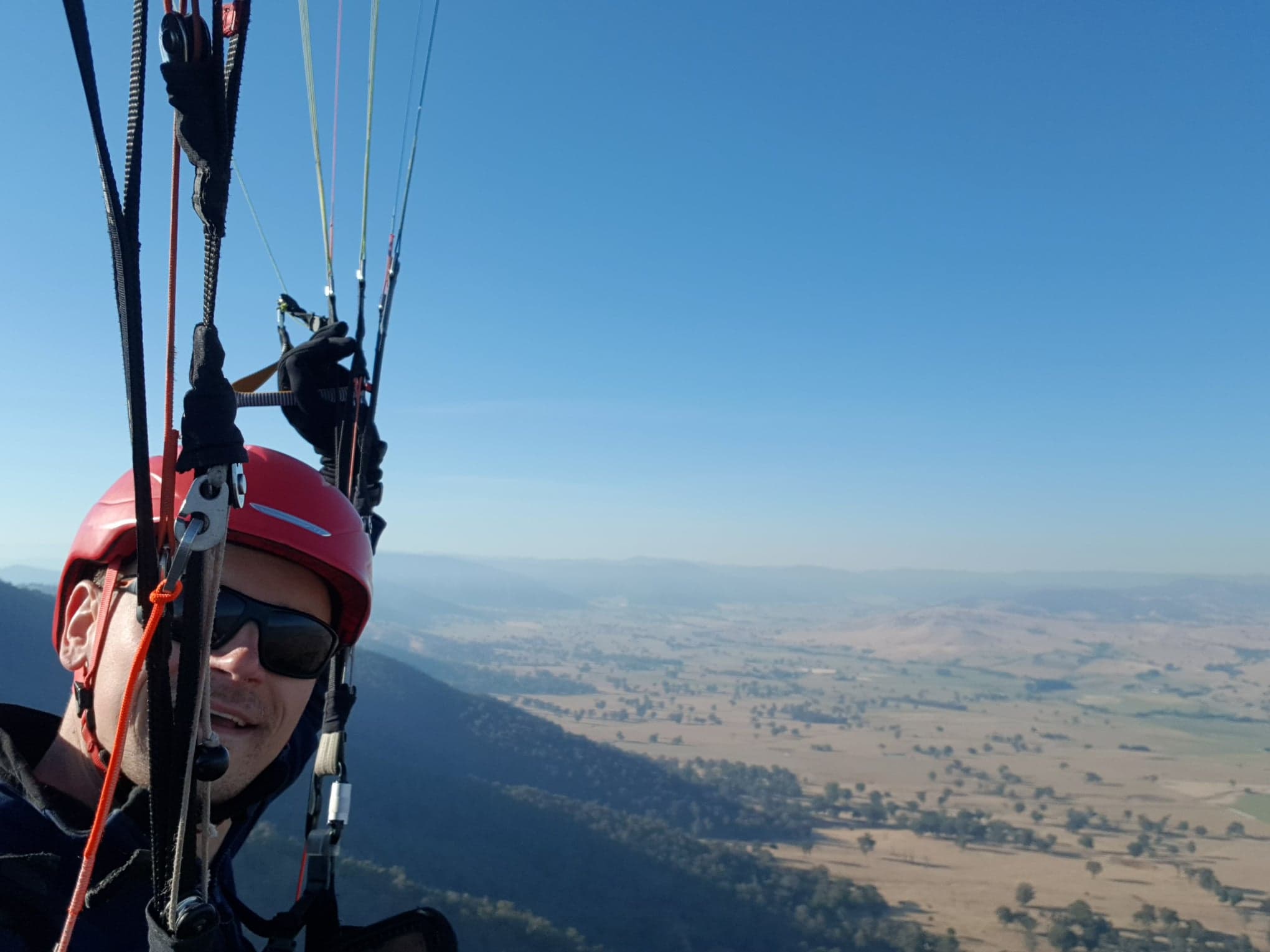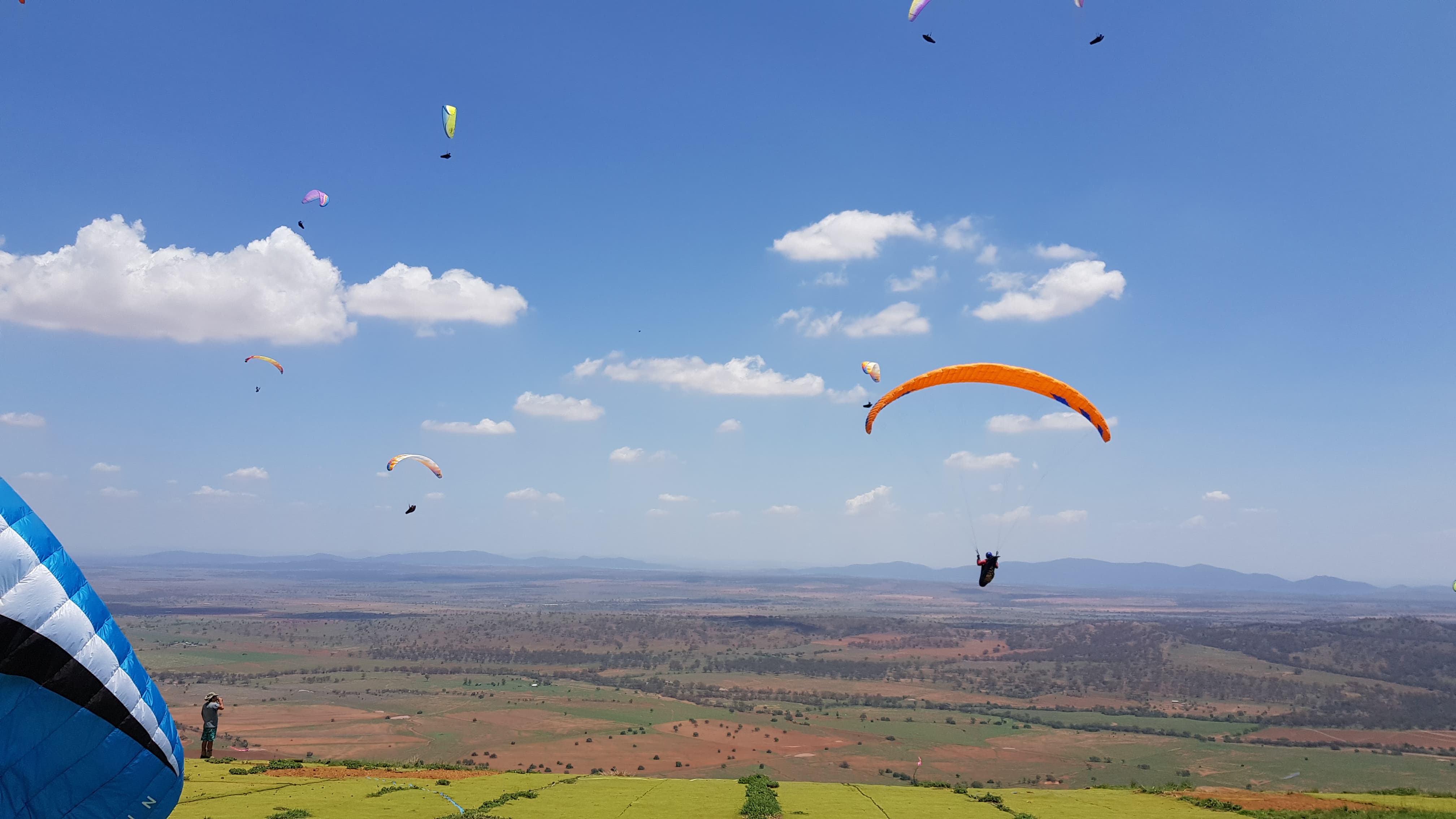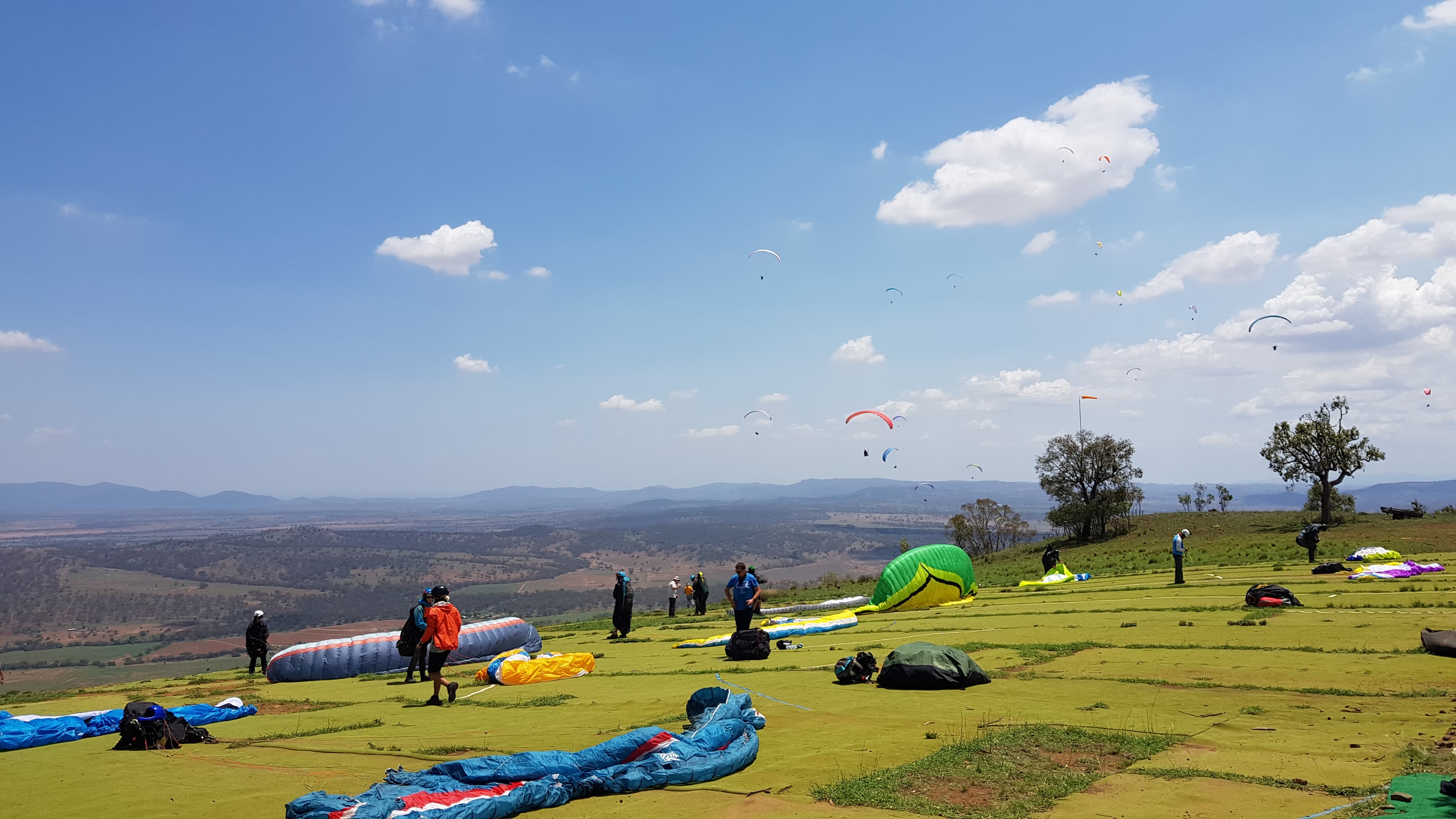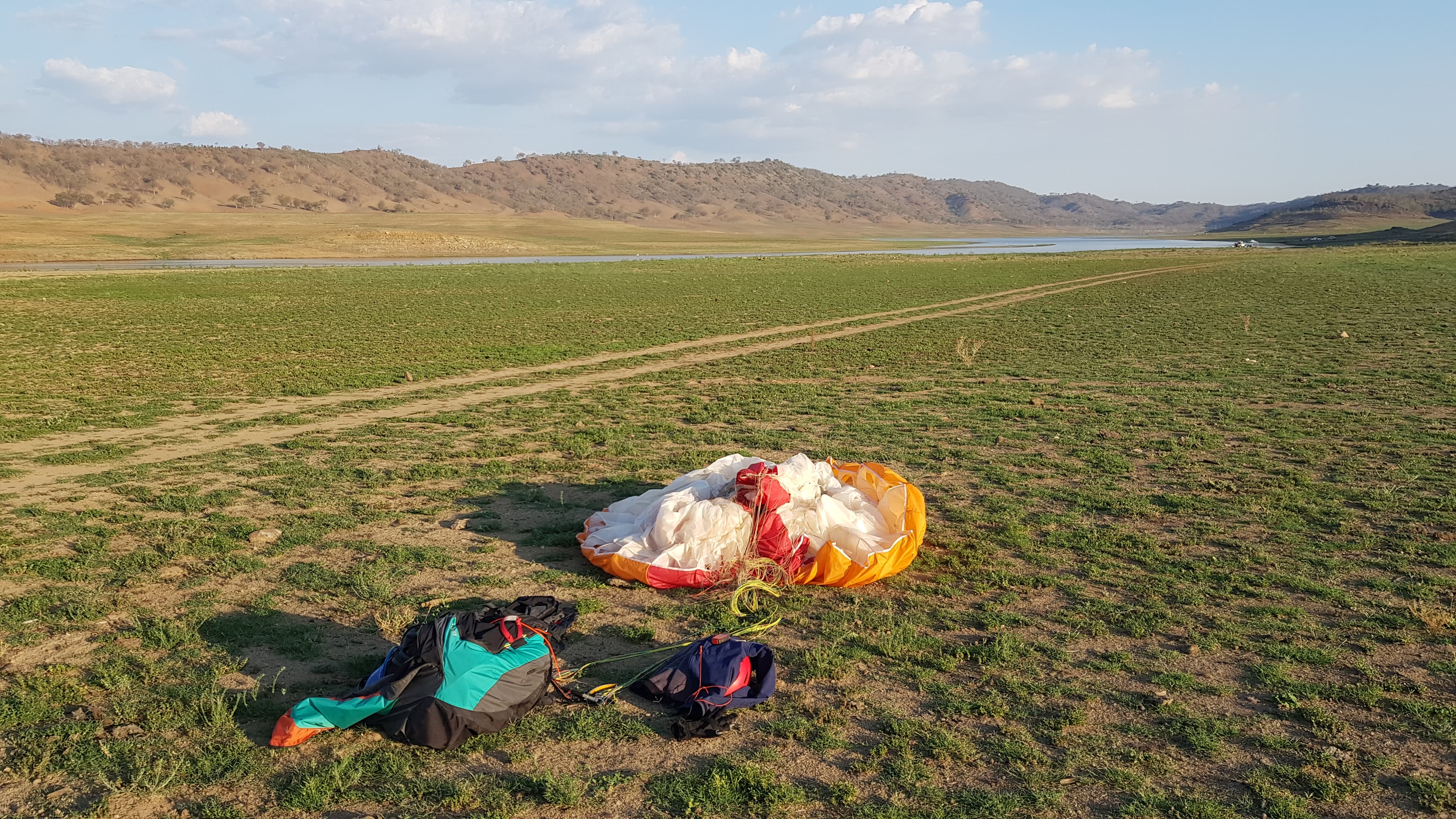The Manilla XC Camp is an annual event held in northern NSW over the week including Australia day. All are welcome to fly XC in whatever direction they choose, with competition categories from beginner upwards. But deciding whether to go can be a hard decision for a novice, and there are differing opinions about how much experience is necessary. To help you make that decision, we are collecting experience reports from novice pilots who have decided to have a go. Here is the first:
2020 Manilla XCC - From a Novice Perspective - by Alex Boiko
These are my reflections on the Manilla XC Camp 2020. My hope is that sharing my experience might help other novice pilots decide whether to go in future years, and to have the best possible experience if they do.
Who am I?

I am a novice pilot who went to the 2020 XCC. By “novice” I mean I learnt to fly in Manilla in April 2019 (10 months before the XCC) and had 53.8 hours from 186 flights by the start of the XCC. Many of these were winter ridge soaring at Spring Hill and Lanyon hike & sleds, but I also had some Lake George time, and some thermal flying at Spring Hill, Mystic, Corryong, Lanyon, and even Tumut. I spent a further three days after my course at Manilla so the site was not new to me. I’d also done a couple of XC clinics at Bright and Corryong and an SIV at about 37.8 hours. At the XCC, I was flying an Epsilon 7 (which replaced the Alpha 5 I learnt on when I had 32.4 hours).
What I did at XCC 2020

I skipped the first two days (Saturday and Sunday) because of the poor forecast (OD risk, variable winds) and general consensus that flying would improve during the week. I also left a day early (again because the forecast wasn’t great, and because I wanted to leave on a high). Driving in through a storm, I stayed at the Imperial Hotel in Manilla, but then camped at the Farm (that’s what everyone calls Godfrey’s back paddock). After a 9:30 briefing every morning, I made my way up the hill in various ways, listened to a follow up briefing and then tried to fly as far away as possible. Then after one or more flights, I ended up at the Farm or the pub, and sometimes in the pool. The whole experience can probably be best described as type 2 fun, with bouts of existential self-doubt, occasional flashes of dazzling type 1 fun and frequent pangs of terror (for me, not in the air, but in the Bashers - the ancient troopies that drive you back up from the bombouts for $10 a trip).
The Flying

For good pilots, Manilla on a good day probably offers some of the best XC potential in Australia. But for novices like me (at least this year) it seemed to deliver somewhat tricky thermals, variable winds, and a lot of bombouts. Maybe the conditions this year were not great, maybe I bought the hype and was expecting too much to come too easily, but I found the thermals trickier to stay in and to core than Bright or Corryong. Most landings were quite thermic and on par with my experiences at Spring, Bright and Corryong.
Gaggle flying (140ish pilots were registered, about 90 or so posted at least one non-zero day) involved up to 30 or 40 pilots trying to climb out from launch at the same time. Most days, the experienced pilots started launching one by one early and encouraging intermediates to take off. Once a few intermediates began climbing out, novices on lower class wings began launching and once they began staying up, everyone seemed to want to launch at once. Things seemed both more orderly than freeflying (because of set turn directions) and chaotic (when pilots chose to barrel right into the gaggles or fly a ridge soaring pattern of four lanes of alternating directions). Having at least some experience with relatively crowded flying is essential unless you are prepared to launch well after the crowd (and even then, the relaunches don’t completely stop until the end of the day).

The air can be a bit interesting (as expected in the middle of the day, in the middle of the summer, in the middle of the hot flatlands), but I did not encounter anything rougher than I have on a partially logged Emily spur at Bright. Having some thermic experience and confidence in your wing (and in yourself controlling the wing) is definitely essential. I was pretty heavy (close to top of range) on my wing, but I had at least some tip rustling on nearly every non-bombout flight. There were a few thermal exits that had a solid chance of becoming frontals or assymetrics if I hadn’t held them in. While manageable, I don’t think a coastal novice (learnt at the coast, not much inland flying) would have enjoyed them.
The launches are pretty reasonable astroturf that was has seen some wear and erosion, but is still in passable shape. The weather station and associated webpage are excellent. The landing paddocks are generously sized and, at least this time, didn’t have too many thistles. I didn’t get too far away from the hill (my longest flight was just over 20 kms) but there are plenty of good landing options in the valleys (although the retrieves are better on the east side of the hill going north or south).

Most pilots come to XCC in groups or teams. Those who don’t make teams on the first day. These are mostly used for organising lifts up the hill and retrieves after flights; they do not affect scoring. I managed to attach myself to a Sydney-based team (some of whom I knew from Corryong) and came away with a bunch of new flying friends at the end of the week.
The Mental Game
For me, the hardest part of the week was adjusting to the conditions and re-calibrating expectations. Despite Manilla’s reputation of anyone being able to point downwind and go far, the thermals still required a lot of work to track and the flying was not “easy”. In my case that meant being happy with making it back to the Farm, and very happy with making it further up the valley. Bombing out in 37-degree heat with 80 per cent humidity, only to watch the gaggle disappear while standing drenched in sweat, was at times monotonously frustrating. But upon reflection, is a safe flight (in not-easy conditions and with 10-20 minutes of thermalling) really that bad?
My mood generally improved when I reshaped my hydration strategy (drink more) and nutrition (eat bigger breakfasts in town instead of weetbix). Finding a way to cool off every day (the pool for hours) also helped.
On my second-to-last day, I watched a guy come down through the gaggle under his reserve. He looked to have landed hard, was dragged for a bit, and didn’t move for a while. As luck would have it, as soon as I pulled big ears to head to him, I hit strong lift, and by the time I found my way out of it, two other pilots were almost on the ground near him. I ended up struggling to make headway upwind to him and drifted back to the Farm. That pilot was ok, but we would later learn that another one died near launch at almost the same time. Many did not feel like more flying that afternoon (even though launch reopened after the helicopter left) and the risks were a bit closer to the front of a few pilots’ minds the next day.
The Friday began with two more bombouts for me and I was ready to sell the wing/quit flying/buy a better wing/become a coastal pilot. But I caught another lift up to launch, ummed and ahhed at the wind strength and direction, was encouraged by more experienced pilots to try the south launch instead of west and was eventually rewarded with my best flight of the week (to Split Rock Dam). With a questionable forecast, I was very happy to end my XCC 2020 on a high note and in love with flying again.
Practicalities of Life at the Farm
It is hot. It is dusty. It is humid. It is all of those in a tent (only hotter, from 7 am). The cabins book out early despite not having AC (and the pubs have very few AC rooms). There was a water shortage this year (and I understand it’s not unusual), so showers are short and tepid. I was drinking around 5-6 litres of water a day in the conditions (there is a tap, but I preferred to rely on bottled supplies). There is no food at the Farm except what you bring - other than the catering van that was open most nights (usually with a choice of two very good options). Manilla has a very sufficient IGA and a breakfast cafe. The pubs are also quite good for dinner (either to celebrate a big flight or to dream about one). Where to go each day seemed to depend on each team and how well pilots flew.
The heat and humidity were particularly tough to adjust to when landing and having much more water than I would usually carry helped me cope. For the night, I ended up buying a pedestal fan from the IGA to have in my tent. Cooling off in the pool in the evenings also seemed to make the nights easier to handle and to make feeling fresher for the next day possible.
The community of pilots staying at the XCC was by far the best part of life at the Farm. From advice on thermalling (more pushing into wind instead of circling) to lending a soldering iron (Baofeng speaker mics don’t have a knot in the cords to stop you pulling the wires off the circuit board), the environment was extremely friendly and supportive. The pilots flying 100s of kms were very willing to talk about their flights, the conditions, and to share advice and stories.
Overall
The XCC is not “easy” for a novice, particularly if you set out with high hopes of going far, but it is very educational, and has the potential to be very rewarding (if conditions turn favourable). If you can survive camping in the heat (or the commute to better accommodation), handle the frustration of bombouts, and manage the sometimes-lively conditions, then it can be a very good opportunity to improve flying skills and maybe even add a few epic flights to your logbook.

If you would like to add your experience to this page, please contact us at website@acthpa.org.